Hauke Harder
Komposition
Installationen
Physik
Weiteres
Kontakt
BEATS (1994) Eine reine Septim (Frequenzverhältnis 7:4) wird durch Sinustöne von extrem stabilen Sinusgeneratoren realisiert und von Lautsprechern wiedergegeben. Das gleiche Intervall wird ebenfalls durch weniger stabile Generatoren erzeugt, wodurch es zu langsamen, mit der Zeit sich in der Geschwindigkeit ändernden Schwebungen für die zwei Tonhöhen kommt. Die technische Ungenauigkeit eines Generatorenpaars sorgt also für die zeitliche Entwicklung der Installation. Diese Schwebungen bewirken einerseits ein Wandern von Knoten und Bäuchen im Raum, erlauben aber auch, durch das Lauter- und Leiserwerden der Einzeltöne, eine Fokussierung dieser als auch des Spezifischen der reinen Septim. Für die Frequenz des tiefen Tons des Intervalls wird eine Eigenfrequenz des Raumes gewählt, der Raum klingt! Photo: Spiegelgrotte Museumsberg, Klangraum Flensburg, 2007 | 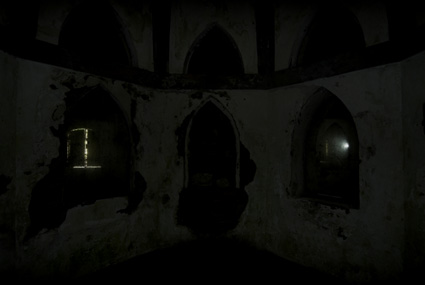 |
GRIGIO UNO (1996) In Grigio Uno wird der Eigenklang von Lautsprechern hörbar gemacht. Durch den offenen Betrieb von Lautsprechern bei tiefen Frequenzen entsteht ein akustischer Kurzschluß, der Ton löscht sich selbst aus. Dieses Phänomen hängt von Lautsprechergröße und Frequenz ab. Was dadurch deutlich hörbar wird, sind Obertöne des Lautsprechers, die Partialschwingungen, welche ein HIFI-gerechter Lautsprecher so wenig wie möglich erzeugen sollte. Bei Einspeisung eines Sinustons von ca. 100 Hz sind dessen Vielfache deutlich zu hören, in der Gesamtheit ergibt sich ein "grauer" Klang. Um diesen quasi hörend zu analysieren, wird in einen weiteren Lautsprecher ein um einen Bruchteil eines Hertz verschobener Sinuston eingespeist. Abhängig vom Partialton ergibt sich jetzt eine spezifische Schwebungsfrequenz, so schwebt der 7. Partialton siebenmal schneller als der Grundton. Dadurch entsteht eine sich wiederholende "Melodie", man fokussiert unbewußt auf die lauterwerdenden Töne. Wahrnehmungstechnisch ist noch zu benmerken, dass es eine Zeit braucht, bis man dieses Phänomen wahrnimmt und man steigt mit der Zunahme von Durchläufen langsam die Treppe der Obertöne hinauf. Photo: Punto e basta, Stadtgalerie Kiel, 1996 | 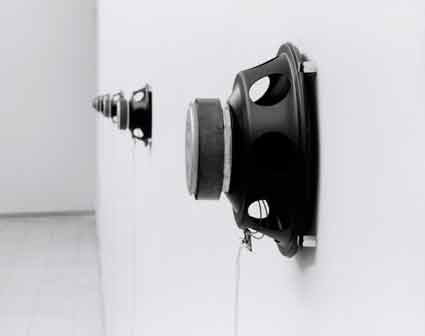 |
GRIGIO DUE (1998) one modulated and one unmodulated sine wave form a major second (ratio 9:8) creating overtone spectra (as in GRIGIO UNO) and ringmodulation spectra. Photo: Galerie escale, Düsseldorf, 1999 | 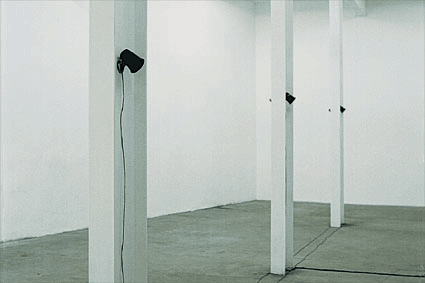 |
7:6 (2001) A minor third (ratio 7:6) created with sine waves sounds from two metal sheets and is modulated. Photo: Stadtgalerie Kiel, 2002 | 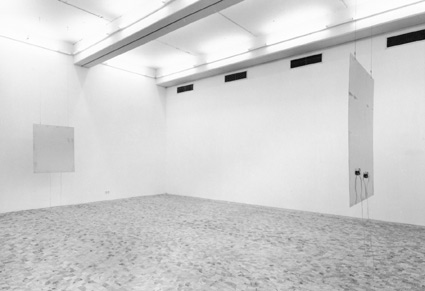 |
SCHÜDDELN (2007) A chord with ratios 6:7:9 created with sine waves and transducers sounds from four metal cups and is modulated due to very slow beatings. Photo: Museumsberg, Klangraum Flensburg, 2007 | 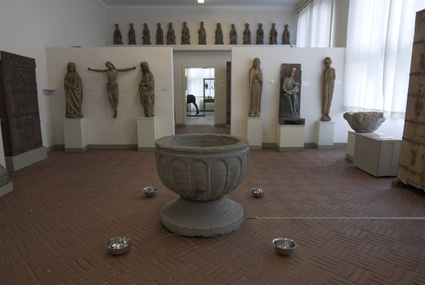 |
GRIGIO TRE (2008) Extended,variable version of GRIGIO DUE using chords with ratios as 6:7:9. Photo: Stadtgalerie Saarbrücken, 2009 | 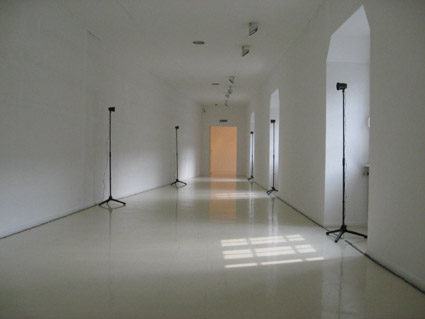 |
SAMMER. HEINRICH, FREUND (1998) Site specific, Streetlevel, Dresden, 1998 | 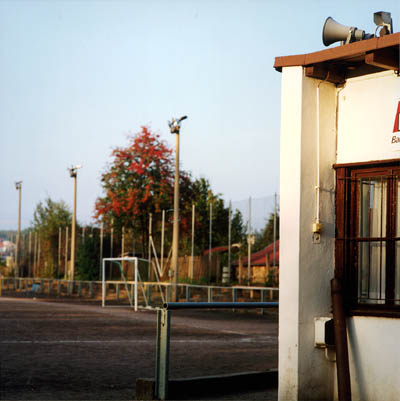 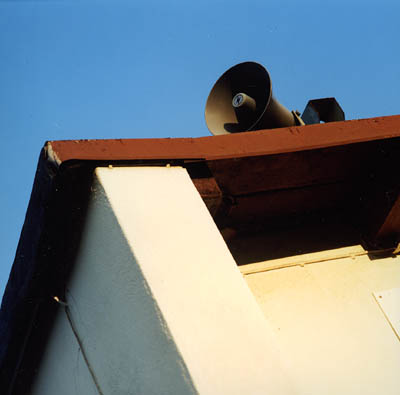 |